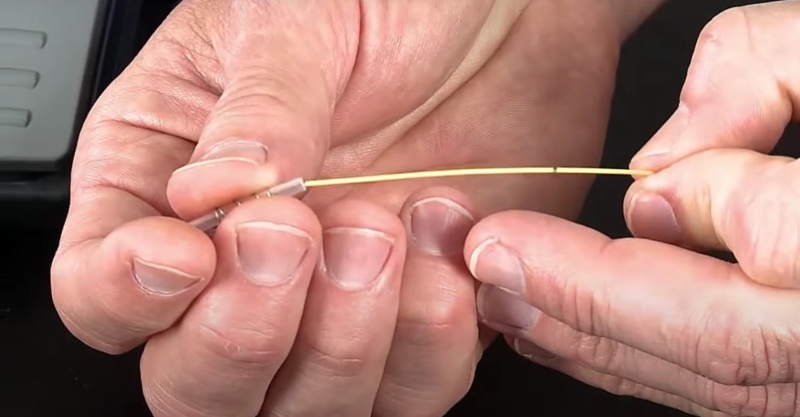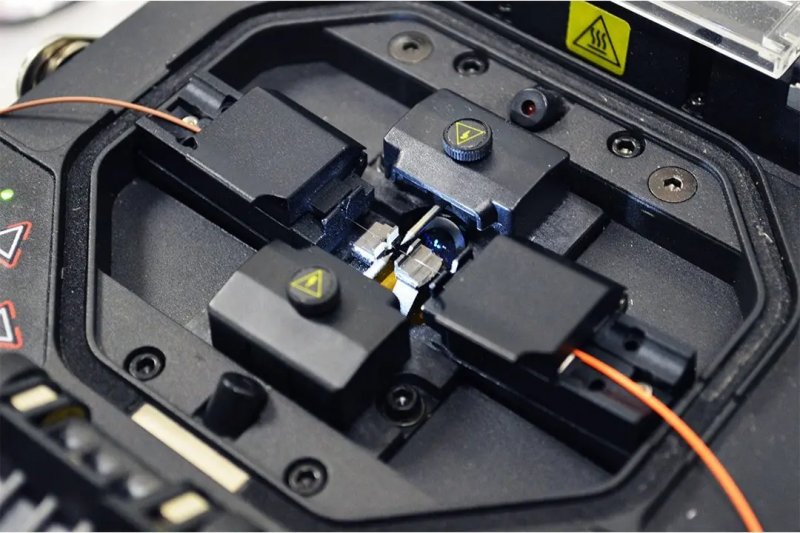How to Fusion Splice Fiber Optic Cable
Fiber optic fusion splicing is the process of connecting two fiber optic cables using a specialized fusion splicer machine.
It is a meticulous process that requires careful attention to detail, especially during end-face preparation, splicing and fiber management. Operators must be observant, thoughtful and follow strict guidelines to ensure successful splicing.
One significant advantage of fiber optic fusion splicing is that it is relatively easy to perform and has low maintenance costs.
In this blog, we will provide a brief guide on how to fusion splice fiber optic cable.
Fiber optic fusion splicing process and steps
1. Cable Stripping and Fixing
Before stripping the cable, remove any damaged or deformed parts. Using a specialized stripping tool, strip the outer sheath of the fiber cable to a length of about 1 meter. For armored cables, use pliers to clamp the steel wire and strip the outer sheath. Then, fix the cable into the splice box and wipe it clean with a tissue.
2. Fiber Separation and Protection

Separate the fibers and pass them through heat shrink tubes of different colors. This protects the fibers during the fusion splicing process.
3. Fusion Splicer Preparation
Power on the fusion splicer and use the preset program for splicing. Remove dust and debris from the machine and its fixtures before and after use.
4. End-Face Preparation
Proper preparation of the fiber end-face is crucial for successful splicing. Strip the coating layer of the fiber using the specialized stripping tool provided with the fusion splicer.
Next, clean the bare fiber with an alcohol-soaked cleaning cotton ball. Finally, use a precision fiber cutting knife to cut the fiber to a length of 10mm-15mm.
5.Fiber Placement

Place the fiber in the V-groove of the fusion splicer and press the fiber clamp and pressure plate gently. Set the position of the fiber in the pressure plate according to the length of the fiber cut. Ensure that the cut surface of the fiber is near the electrode tip.
6.Heating and Shrinking
After splicing, remove the fiber from the fusion splicer and place it in the middle of the heat-shrink tube. Heat the tube in a heating furnace for 40-85 seconds depending on the size of the tube.
7.Fiber Management
Coil the spliced fibers onto the fiber tray. When coiling, maintain a certain radius to minimize loss during transmission.
8. Sealing and Hanging
If splicing is done in the field, ensure that the splice box is sealed to prevent water from entering. Use hooks to hang the splice box on a suspension line.
By following these steps, you can achieve successful fiber optic fusion splicing. At fibeye, we offer high-quality fusion splicers and fiber optic tools to help you achieve optimal results.
2. Quality Inspection of Fiber Optic Cable Splicing
Throughout the entire fusion splicing process, it is essential to ensure the quality of fiber optic splicing and minimize additional losses. It is not recommended to rely solely on visual inspection to judge the quality of splicing.
- Real-time monitoring and tracking of each fiber during the splicing process to inspect the quality of each splice point;
- Random inspection of coiled fibers after each coiling to determine the additional loss caused by coiling;
- Before sealing the splicing box, conduct a uniform measurement of all fibers to check for any missed measurements and fiber reserve space, and to ensure that there is no extrusion on the fiber and connector;
- After sealing the box, perform a final inspection of all fibers to check for any damage caused by the enclosure.
3. Main Factors Affecting Fiber Optic Splicing Loss
There are many factors that affect fiber optic splicing loss, which can be broadly divided into intrinsic and extrinsic factors. Intrinsic factors refer to the fiber optic properties themselves, including:
- Inconsistent mode field diameter of the fiber;
- Mismatched core diameter of two fibers;
- Non-circular core cross-section;
- Poor concentricity between the core and cladding.
- Extrinsic factors that affect fiber optic splicing loss are related to splicing techniques.
- Axial displacement: The core of a single-mode fiber is very thin, and the axial displacement of two connected fibers will affect the splicing loss.
- Axial tilt: When the end face of the fiber is tilted by 1 degree, a splicing loss of about 0.6 dB is produced. If the splicing loss requirement is ≤0.1 dB, the tilt angle of single-mode fiber should be ≤0.3 degrees.
- End face separation: Poor connection of movable connectors can easily cause end face separation, resulting in significant connection loss.
- End face quality: Poor flatness of the fiber end face can also cause loss, even bubbles.

